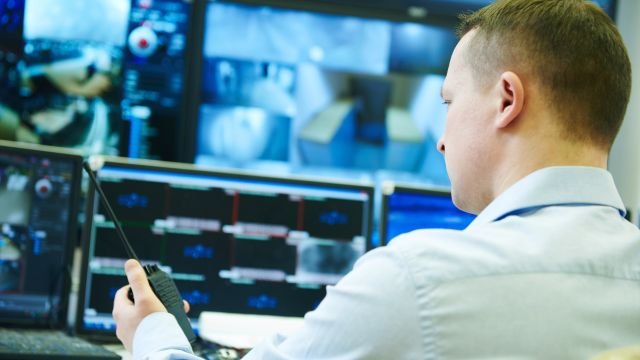In today’s fast-paced digital world, remote work has become a standard rather than an exception. With employees accessing sensitive company data from various devices and locations, many employers wonder: can I monitor staff device security remotely? The simple answer is yes, but it comes with several considerations that every business leader should understand to protect their organization effectively while respecting employee privacy.
The Growing Need for Remote Device Security Monitoring
Remote work has transformed how businesses operate. Devices such as laptops, tablets, and smartphones are no longer confined to the office network. They travel with employees, often connecting through public Wi-Fi or home networks that lack robust security. This increased exposure to cyber threats has made remote monitoring of staff devices a critical concern for companies aiming to safeguard their data.
Hackers can exploit vulnerabilities on employee devices, using malware, phishing, or unauthorized access to breach company defenses. Without proper oversight, a single compromised device can lead to significant data leaks or operational disruptions. Hence, companies are increasingly asking themselves, can I monitor staff device security remotely to mitigate these risks proactively.
Understanding What Remote Monitoring Entails
Remote device security monitoring involves using software tools that allow employers or IT teams to oversee security measures on devices no matter where the employee is working. These tools can track device health, software updates, firewall status, antivirus activity, and detect suspicious behavior.
However, it’s important to recognize that remote monitoring does not mean spying on every employee action. Effective security monitoring focuses on identifying potential vulnerabilities or threats rather than intruding into personal or non-work-related device usage. This distinction is crucial for maintaining trust and complying with legal requirements.
Technologies That Enable Remote Security Monitoring
Several technologies support remote monitoring of staff devices:
- Endpoint Detection and Response (EDR): EDR tools continuously monitor devices for signs of cyber threats, unusual activity, and vulnerabilities. They can alert IT teams immediately if a problem is detected, enabling quick responses.
- Mobile Device Management (MDM): MDM solutions help manage mobile devices by enforcing security policies, ensuring software is updated, and remotely wiping data if a device is lost or stolen.
- Virtual Private Networks (VPNs): VPNs encrypt internet traffic, helping secure communications when employees access company resources from outside the office.
- Security Information and Event Management (SIEM): SIEM systems aggregate data from various devices and networks, providing a centralized view of security status and incidents.
By combining these tools, companies can maintain a robust security posture, even with a distributed workforce.
Legal and Ethical Considerations
Before implementing any remote monitoring, businesses must carefully consider legal and ethical boundaries. Monitoring employee devices can easily infringe on privacy rights if done improperly.
Laws vary by country and region, but many require employers to:
- Inform employees about the extent and nature of monitoring
- Obtain consent where necessary
- Limit monitoring to work-related activities and data
- Secure and manage collected data responsibly
Transparency is key. Employees are more likely to accept monitoring if they understand it protects company data and their own security. Ethical monitoring balances security needs with respect for personal boundaries.
The Challenges of Monitoring Remote Devices
While technology exists to monitor staff device security remotely, challenges remain:
- Device Diversity: Employees use a variety of devices and operating systems, making it harder to standardize monitoring and security protocols.
- Personal vs. Work Devices: Many employees use personal devices for work tasks, raising privacy concerns and complicating monitoring efforts.
- Network Variability: Devices connect through different networks with varying security levels, increasing the complexity of threat detection.
- User Behavior: Even the best monitoring tools can be undermined by risky user behavior like clicking on phishing links or using weak passwords.
Addressing these challenges requires a combination of technology, clear policies, and ongoing employee education.
Best Practices for Monitoring Staff Device Security Remotely
For organizations considering remote device monitoring, adopting best practices can enhance effectiveness and minimize friction:
- Develop Clear Policies: Establish and communicate clear guidelines about what monitoring entails and why it is necessary.
- Use Role-Based Monitoring: Tailor monitoring levels based on job roles to minimize unnecessary oversight.
- Leverage Automation: Use automated tools to detect threats and enforce policies without manual intervention.
- Provide Security Training: Educate employees about safe computing practices and the importance of compliance.
- Regularly Update Software: Ensure all devices have the latest security patches and antivirus definitions.
- Respect Privacy: Limit monitoring to work-related activities and data, and avoid accessing personal files or communications.
By following these principles, companies can protect their data while maintaining employee trust.
The Role of Employee Trust and Communication
Monitoring staff devices remotely can create tension if employees feel their privacy is being invaded. This makes open communication essential. When employees understand the rationale behind security monitoring—that it protects company assets and their own information—they are more likely to cooperate.
Employers should invite feedback and address concerns, creating a culture where security is a shared responsibility. Encouraging employees to report suspicious activity also strengthens the organization’s defense.
Future Trends in Remote Device Security Monitoring
As remote and hybrid work arrangements continue to evolve, so will the technologies and strategies for monitoring device security. Artificial intelligence and machine learning are increasingly being integrated into security tools to identify patterns and anomalies faster and more accurately.
Moreover, zero-trust security models, which assume no device or user is inherently trustworthy, will drive more dynamic and continuous monitoring approaches. This means staff devices will be checked not just at login but throughout their use of company resources.
Final Thoughts: Can I Monitor Staff Device Security Remotely?
The answer is a qualified yes. It is both possible and necessary for many organizations to monitor staff device security remotely to protect sensitive information and maintain operational integrity. However, it must be done thoughtfully, balancing technological capabilities with legal compliance, ethical standards, and transparent communication.
Companies that succeed in implementing remote security monitoring with these considerations in mind will be better positioned to defend against cyber threats while fostering a culture of trust and responsibility among their workforce.



